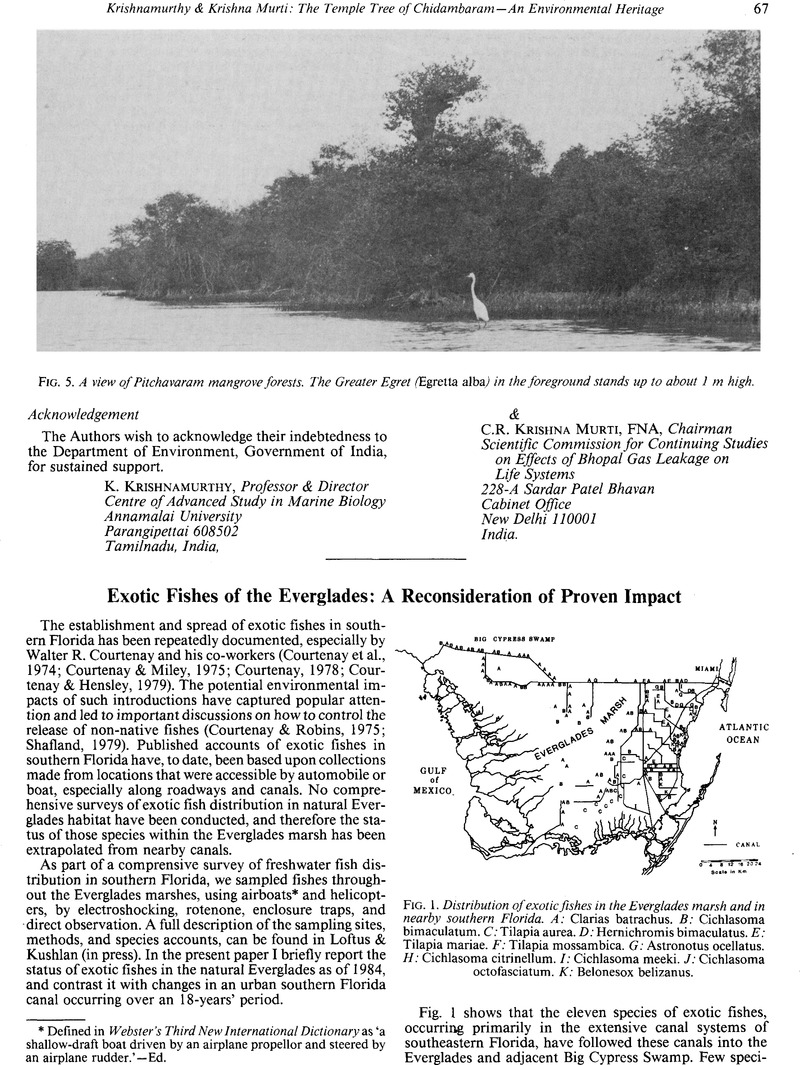Crossref Citations
This article has been cited by the following publications. This list is generated based on data provided by Crossref.
Shafland, Paul L.
1996.
Exotic fishes of Florida — 1994.
Reviews in Fisheries Science,
Vol. 4,
Issue. 2,
p.
101.
Lorenz, O. Thomas
and
O'Connell, Martin T.
2008.
Growth of Non-Native Rio Grande Cichlids (Herichthys cyanoguftatus) at Different Salinities and in the Presence of Native Bluegill (Lepomis macrochirus).
Journal of Freshwater Ecology,
Vol. 23,
Issue. 4,
p.
537.
Brooks, Wesley R.
and
Jordan, Rebecca C.
2010.
Enhanced interspecific territoriality and the invasion success of the spotted tilapia (Tilapia mariae) in South Florida.
Biological Invasions,
Vol. 12,
Issue. 4,
p.
865.
Schofield, Pamela J.
and
Loftus, William F.
2015.
Non-native fishes in Florida freshwaters: a literature review and synthesis.
Reviews in Fish Biology and Fisheries,
Vol. 25,
Issue. 1,
p.
117.
Zwahlen, Robert
2022.
Assessing the Environmental Impacts of Hydropower Projects.
p.
231.





